Updated Dec. 16, 2023. What is the story behind Lisbon’s Rua Augusta Arch? Did you know that you can go to the top?
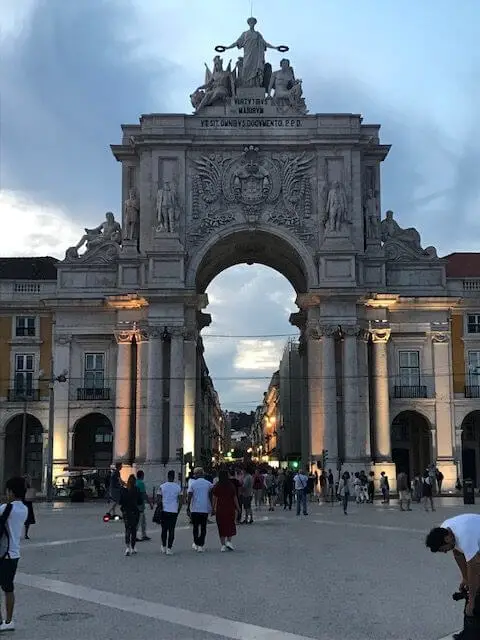
You can go to the top of the Rua Augusta Arch
Many visitors to Lisbon are unaware that this striking arch has a rooftop viewing deck that offers 360-degree views of the city and the Tejo River. I think it is one of the best miradouros (scenic viewpoints) in the city.
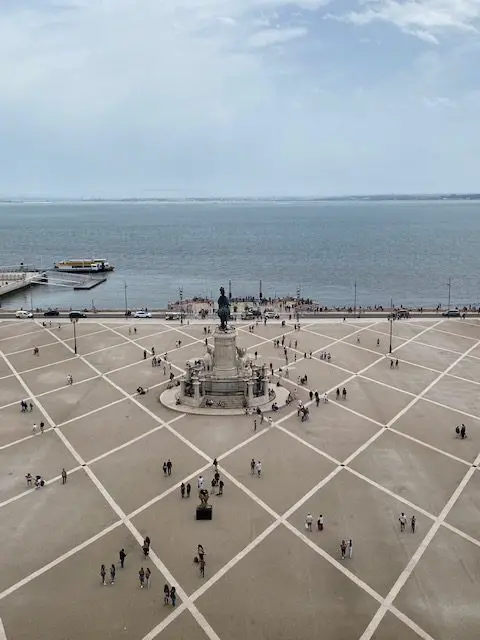
Admission to the Arco da Rua Augusta
Admission: 3.50€, Children under 5 are free.
Admission is free with the Lisboa Card. To learn more about the Lisboa Card, see my article, Lisboa Card | Everything you need to know
There is an elevator that takes visitors up to the clock room, but the rooftop is not accessible to those with limited mobility, as there is a tight spiral staircase with roughly thirty steps to get to the rooftop.
Hours of the Rua Augusta Arch
The Rua Augusta Arch is open from 10 am until 7 pm.
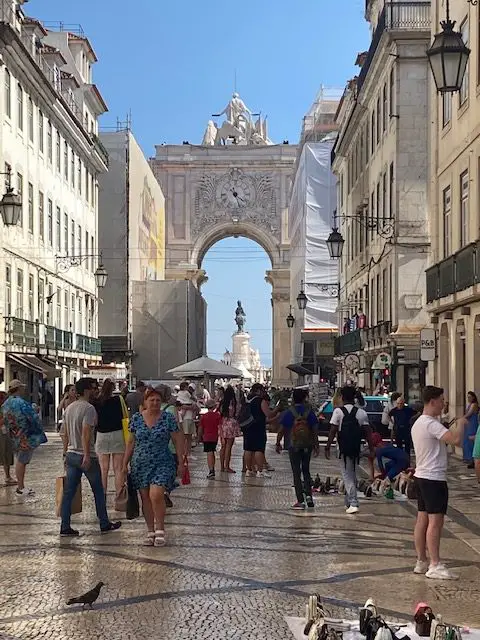
How to get to the Rua Augusta Arch
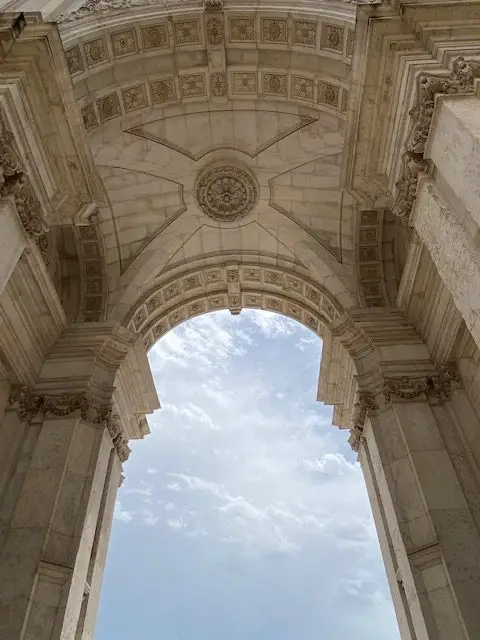
The nearest metro stations are Rossio (green line), Terreiro Paço (blue line), and Baixa-Chiado (blue and green lines).
You can also take Tram 28, Tram 15E, or buses 728, 735, 737, 759, or 794.
For more information on Tram 28, see my Where does Tram 28 stop? All you need to know about Tram 28
To learn more about Tram 15E, visit How to get from Alfama to Belém (Hint: Tram 15E)
Address: Rua Augusta 2
Views from the Rua Augusta Arch
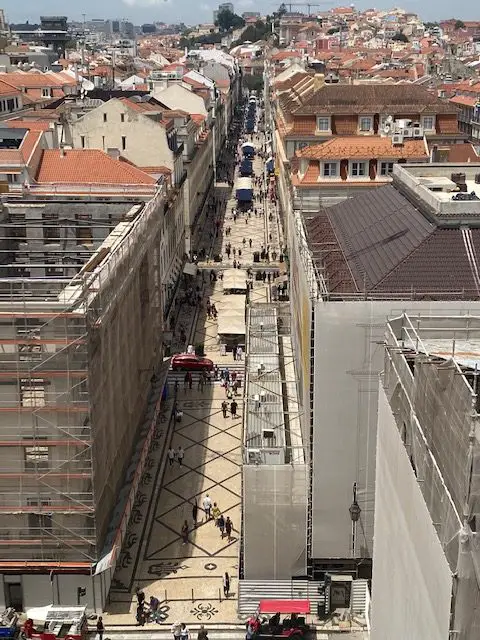
To the south, you have Praça do Comércio and the Tejo River. To the north is Rua Augusta and the Baixa neighborhood.
To the east, you can see Alfama, the Lisbon Cathedral Lisbon Cathedral | All you need to know before you go, and the castle.
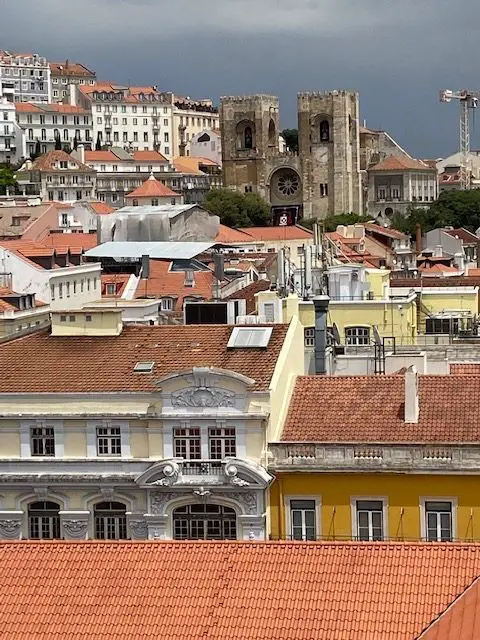
To learn more about the castle, read my In and around Castelo de São Jorge – Lisbon’s castle
To the west you can see the Carmo Convent ruins. Lisbon’s Convento do Carmo Ruins | Everything You Need to Know
What else is near the Arco da Rua Augusta?
The arch is flanked by impressive, bright yellow arcaded buildings. You can spend the night in one of these beautiful buildings at the Pousada de Lisboa hotel. To learn more about Pousada de Lisboa, read my article, (Updated) Lisbon’s most interesting hotels (truly unique lodging in Lisbon)
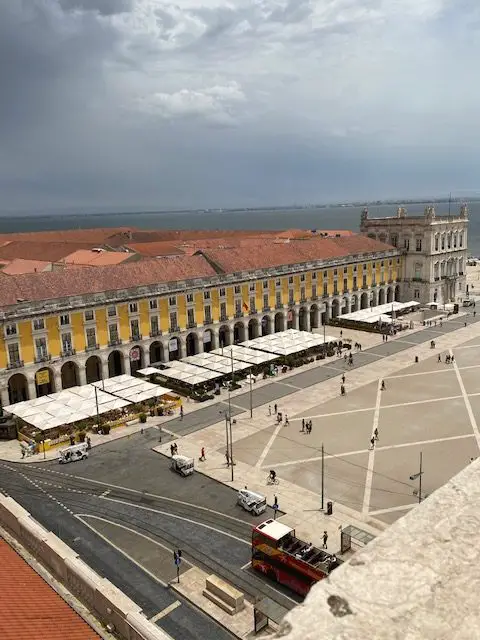
Also surrounding the arch and Praça do Comércio you will find Cafe Martinho da Arcada – Lisbon’s oldest cafe (opened in 1782) at Praça do Comércio, 3.
The Beer Museum (Museu da Cerveja) is located at Terreiro do Paço – Ala Nasçente, 62.
Official website: Museu da Cerveja – Grupo O Valor do Tempo
And you can sample Portuguese wines at Viniportugal Tasting Room, Terreiro do Paço, 1100.
Official website: VINIPORTUGAL – Home
You are also very close to the Santa Justa Elevator Elevador de Santa Justa | Everything you need to know and the Design and Fashion Museum (MUDE), and the Carmo Convent.
You are also only a few blocks from the famous Santa Justa Lift.
Do you only have a short time in Lisbon? See my articles, Lisbon 24 hour checklist – what should I see and do?Lisbon 24 hour checklist – what should I see and do?
If you have a bit more time, try How to spend 48 hours in Lisbon — a 48-hour itinerary
So, what is the story behind Lisbon’s Rua Augusta Arch?
The Rua Augusta Arch (Arco da Rua Augusta) was built to celebrate the reconstruction of Lisbon following the disastrous earthquake of November 1, 1755.
The earthquake and tidal wave and fires that followed wiped out all of low-lying downtown Lisbon and much of what was on the surrounding hills.
Construction of the arch started immediately afterward in 1755 and was completed in 1873. It took 118 years to finish! But it is beautiful.
Originally, it was designed by architect Santos de Carvalho to be a bell tower, (there is a small bell on the roof) but eventually, the monument was shaped into an arch.
As a result, the arch is a beautiful gateway onto Praça do Comércio – Lisbon’s largest square, where the royal palace once stood until the earthquake.
As you approach from the pedestrian-mall Rua da Augusta, you see a clock above the arch.
Looking through the arch, you see the massive statue of King José I on his horse. He was king of Portugal at the time of the earthquake.
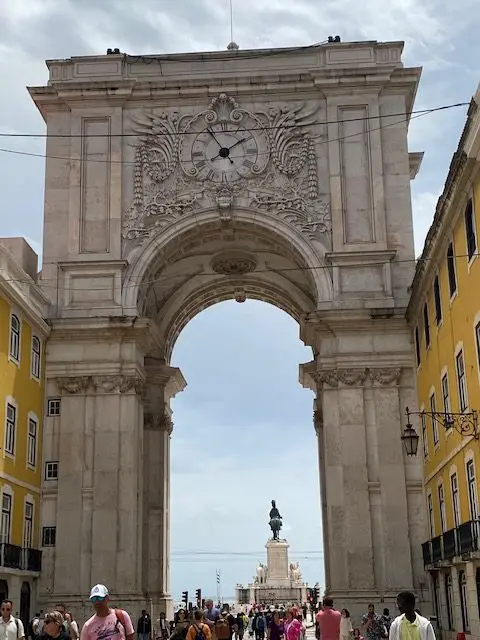
You also catch a glimpse of Praça do Comércio and the Tejo River. If you are standing in Praça do Comércio, you will see that the arch has six columns that stand eleven meters tall.
Directly above the arch is a relief of the coat of arms of Portugal.
The trio at the top, sculpted by Célestin Anatole Calmels (French, 1822-1906), represents Glory rewarding Valor and Genius.
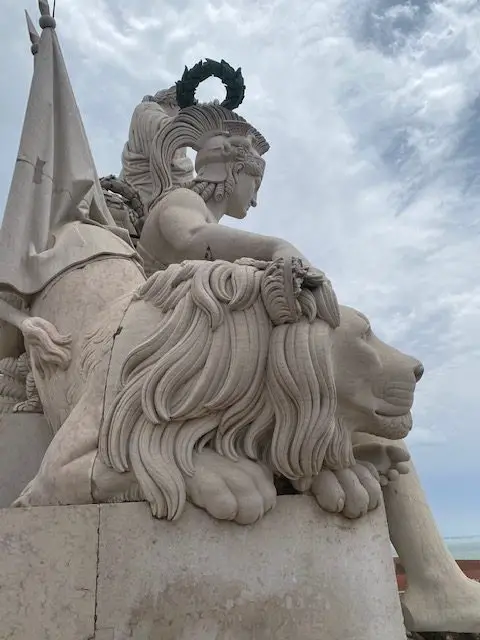
The lower statues, directly above the columns, were sculpted by Victor Bastos. On the right, you see Nuno Álvares Pereira (1360-1431). Álvares was a general who liberated Portugal from Castile.
Later in life, he became a Carmelite monk and he founded Lisbon’s Convento do Carmo – which was partially ruined in the 1755 earthquake. He was sainted by Pope Benedict in 2009.
Also on the right side, you see Sebastião José de Carvalho e Melo, the Marquês de Pombal. He was the general who was in charge of the reconstruction of Lisbon following the earthquake.
A military man, he rebuilt the downtown in an orderly grid. He also pioneered earthquake-resistant architecture, making sure that Lisbon’s Baixa Pombalina (named in his honor) would withstand any future disasters.
Opposite on the left are Vasco da Gama and Viriatus. Viriatus was a general who led the locals against an invasion by the Romans. Vasco da Gama is the explorer who discovered a sea route to India, making Portugal one of the richest nations in the world (through its control of the spice trade) at the beginning of the 16th Century.
The reclining figures represent Portugal’s two great rivers, the Douro and the Tejo.
Thank you for reading about the Rua Augusta Arch. I am not associated with any of the businesses mentioned on this page.